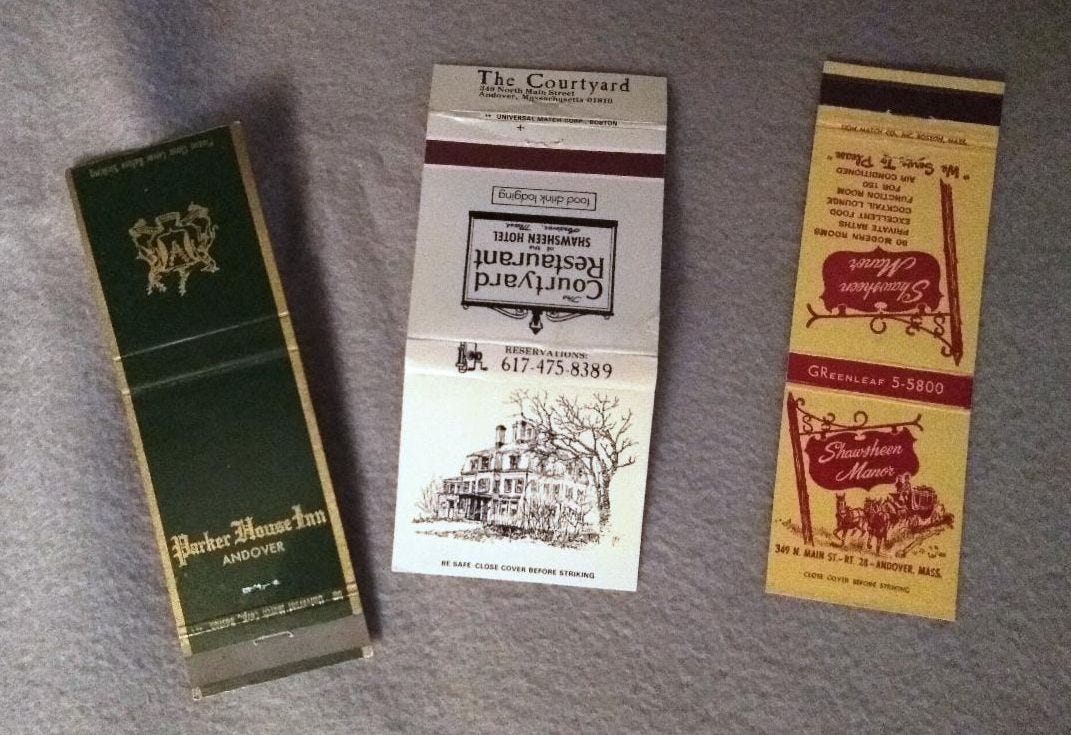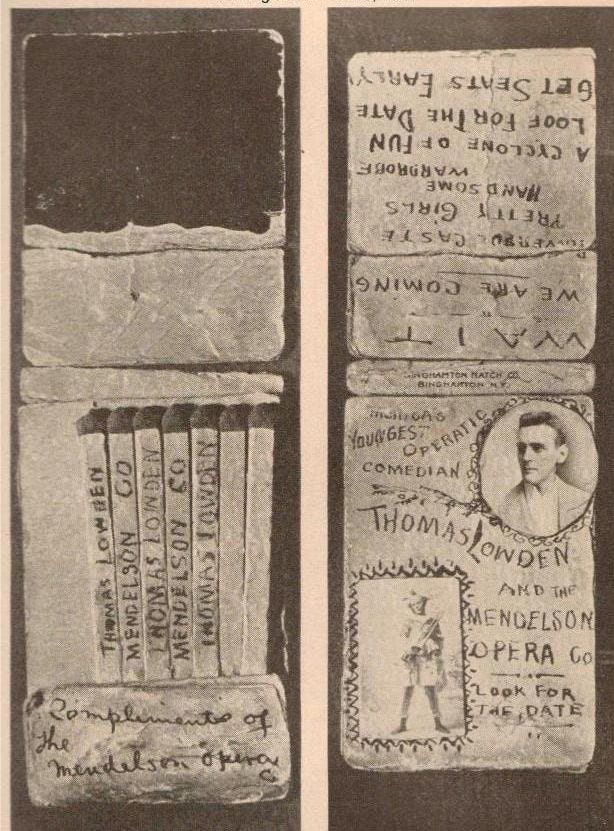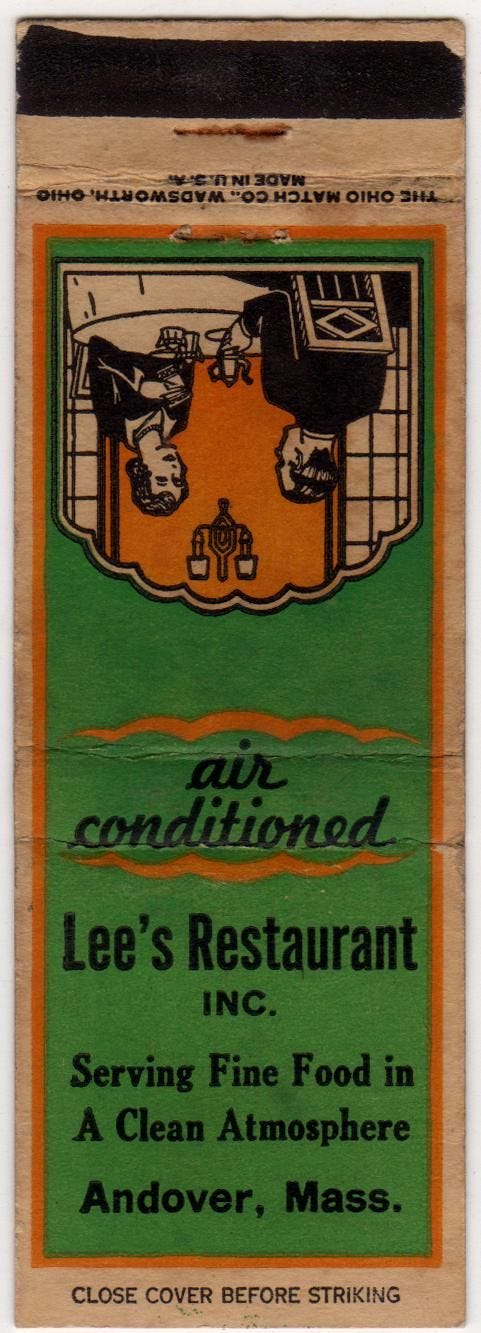From the History Buzz Archives: Anybody got a match?
Did you know that there are nearly 300 stories on History Buzz? Many were written long before History Buzz was founded. Today, we're looking back at a What's It Wednesday from February 3, 2021.
Welcome or welcome back to History Buzz! If you’re a subscriber to the Buzz, thank you! If you’re new here, or you haven’t become a subscriber yet, please sign up for a subscription to have History Buzz delivered directly to your inbox. If you can, please consider a paid subscription to help support the research and writing that makes History Buzz possible.
Are you a phillumenist? The History Center is, I guess. The term, “lovers of light” includes anyone who has a glass jar or tin filled with matchbooks picked up in travels, to collectors with thousands of covers.
Matches go back to the late 1600s when an alchemist, Hennig Brandt, separated phosphorous and discovered its flammable properties while trying to make gold. Not what he wanted. However, his research was used by others. Over the next 200 years, various designs of wood sticks coated in mixtures of phosphorous, zinc, and sulfur were tried. British chemist, John Walker is credited with the first to succeed in making a dependable matchstick in 1826. He used a coating of phosphorus and antimony sulfide on the stick head and sandpaper as the igniter.
After then, many design improvements followed to give us the wooden match that we know of today. Called “safety matches” because the phosphorus igniter was a strip on the outside of the box, the matches did have drawbacks. They were awkward to carry around in one’s pocket and were expensive to produce.
Paper matchsticks, patented in 1882, were a cheaper, easier alternative and were sold in a paper wrapper. John Pusey, a Philadelphia patent lawyer designed a stiff paper book-like cover with a strip of 50 paper matches. Called “flexibles” the design was quickly adapted to have the striker strip on the outside of the front cover. Since then, the design has stood the test of time. The only changes made were to add “Close before striking” to the covers in 1913-1915 and to move the striker strip to the back of the matchbook covers in the 1970s.
American companies quickly realized the use of matchbook covers for advertising. In 1893-94, the Mendelson Opera Company ordered blank matchbooks from the Binghamton Match Company (NY). They hand- wrote publicity about Thomas Lowden's, “America’s youngest operatic comedian,” performances on the outside cover and on the matches inside. After that, matchbooks were accepted as a highly cost-efficient way of advertising.
The peak years for matchbooks were in the 1970’s. By then there were 25 match companies in the US and Canada. Some factories made only matchbooks for promotional advertising – mostly free distribution by restaurants, hotels, car dealerships and even funeral homes. It is estimated that during the peak years over 35 billion matchbooks were made per year. That’s a lot of advertising opportunities.
We have 8 matchbook covers in our collection. Most have traditional advertising for some of Andover’s former restaurants.
The Parker House Inn, the Courtyard Restaurant, and the Shawsheen Manor, were once at the same address in Shawsheen.
The Shawsheen Manor was located on North Main St. and was formally the home of John Smith. It saw many incarnations. In 1919, the home was purchased by William Wood as part of his planned community. From 1922-1944 it was a hotel including a restaurant called the Shawsheen cafeteria. From 1965-69, the Shawsheen Manor's restaurant’s name became the Parker Tavern and then the Parker House Inn. The Courtyard Restaurant was another name change before the Shawsheen Manor was demolished in 1988.
Lee's Restaurant was located on Main Street and opened in 1949 in what had been the Andover Lunch according to an ad in the Andover Townsman. Mr. Lee associated “with the hotel and restaurant business in New York, Florida and New Hampshire,” vowed “to bring the best of foods served in an appetizing manner at moderate prices” according to the Townsman.
There are many ways that we share Andover’s stories. Sometimes we find history in the smallest things, like matchbooks!
Thanks for reading! What about you? Are you a phillumenists? Leave us a comment and let us know what you think. We love hearing from History Buzz readers!
If you can, please consider becoming a paid subscriber for $5/month. Your subscription will support the research and writing the makes History Buzz possible. Thank you!









Thanks for your comments. It was a trip down memory lane for me to see the matchbooks posting. It was fun to write then and fun to read now.
I like it. I have one from my wedding, but it has no Andover provenance except for the missus and me.